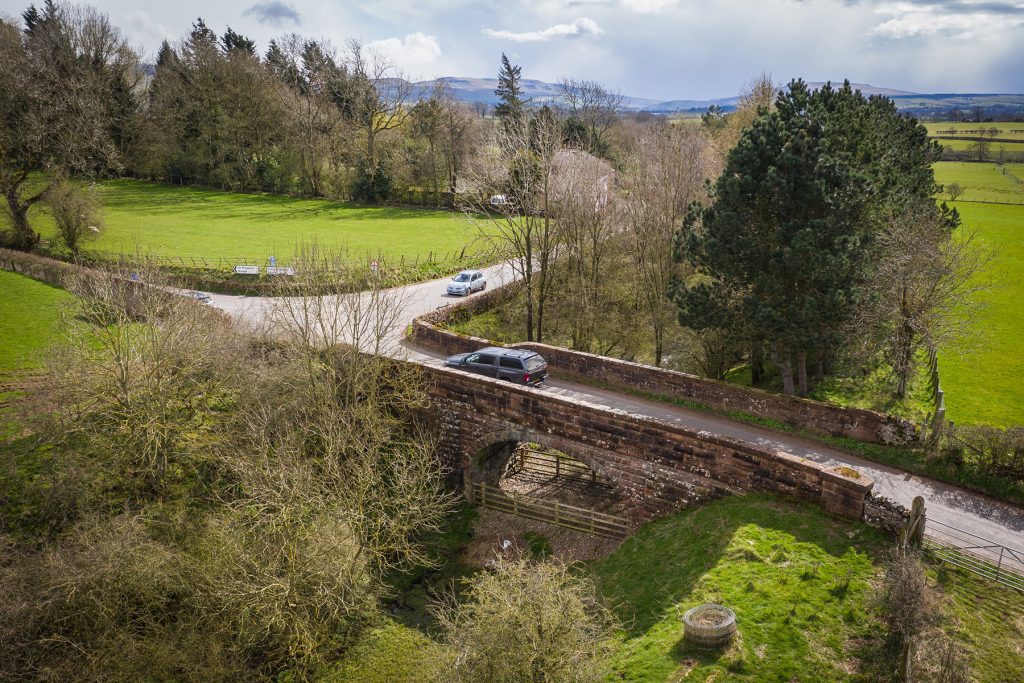Two experienced civil engineers have criticised the infilling of a historic railway bridge which its custodian claimed might fail and collapse.
Last year, the structure at Great Musgrave in Cumbria was buried in around 1,600 tonnes of aggregate and concrete despite being needed for a connection between two heritage railways. Inspection reports identified a small number of minor defects within the bridge’s arch which could have been repaired for around £20K. Instead National Highways – who manage the bridge for the Department for Transport – infilled it for £124K, blocking the route.
Planning officers from Eden District Council attempted to halt the work, but an engineer from the state-owned roads company told them that infilling was “required to prevent the failure of the bridge and avert a collapse”. National Highways pressed ahead under powers only applicable in emergency situations presenting a threat of death or injury, but these only last 12 months and the Council has since insisted that retrospective planning permission must be obtained.
The HRE Group – an alliance of heritage campaigners, sustainable transport advocates and greenway developers – provided copies of National Highways’ inspection and assessment reports to two civil engineers with considerable experience of looking after Victorian structures.
In the Sixties, Tony Freschini acted as resident engineer on the project to redevelop Euston Station and, between 1990 and 1992, supervised the refurbishment of the 24-span Ribblehead Viaduct on the Settle & Carlisle Railway, helping to save the famous line from closure.
“I can’t imagine why anyone would infill Great Musgrave bridge”, he said. “The inspection reports make clear that there was really nothing wrong with it.
“Some of the minor defects may have occurred when the bridge was built in the 1860s. A few of the stone blocks had become loose over time, but repointing the open joints would have kept them in place. It just needed basic, day-to-day maintenance, costing a fraction of the price of infilling.”
“All the efforts of the Victorians who expended capital and men’s lives on these valiant structures: we can’t just desert them by infilling bridges and forgetting about them. That’s not the right way – these are useful assets. We should look to preserve the best of the old infrastructure and give it a new life.”
Charles Blackett-Ord is the Engineering Director of Blackett-Ord Conservation, the company responsible for extensive repairs to the imposing Lambley Viaduct, a Grade ll* listed structure on Northumberland’s former Alston branch.
“What happened with Great Musgrave bridge was a disgrace”, asserts Charles, “and brings shame on the engineering profession. There was absolutely nothing to justify it; quite clearly, there was no emergency here or any prospect of one. All the bridge needed was some pointing underneath the arch barrel which is a common, cheap and easy way of providing additional strength.
“Engineers have a duty not only to look at carbon footprints, but also the social, archaeological and historical aspects of what they do. Desecrating a structure like this is unacceptable and the planning application should certainly be refused.”
Following the controversy caused by the work at Great Musgrave, the Government paused National Highways’ programme of infilling and demolition schemes, but work is expected to resume in the next few weeks.
Comments on the planning application can be submitted online via Eden District Council’s website, searching for case reference 22/0254. The HRE Group understands that more than 300 objections were lodged in the first week after the plans’ publication. A decision on whether to grant permission for the infill’s retention is expected by 27 May.






